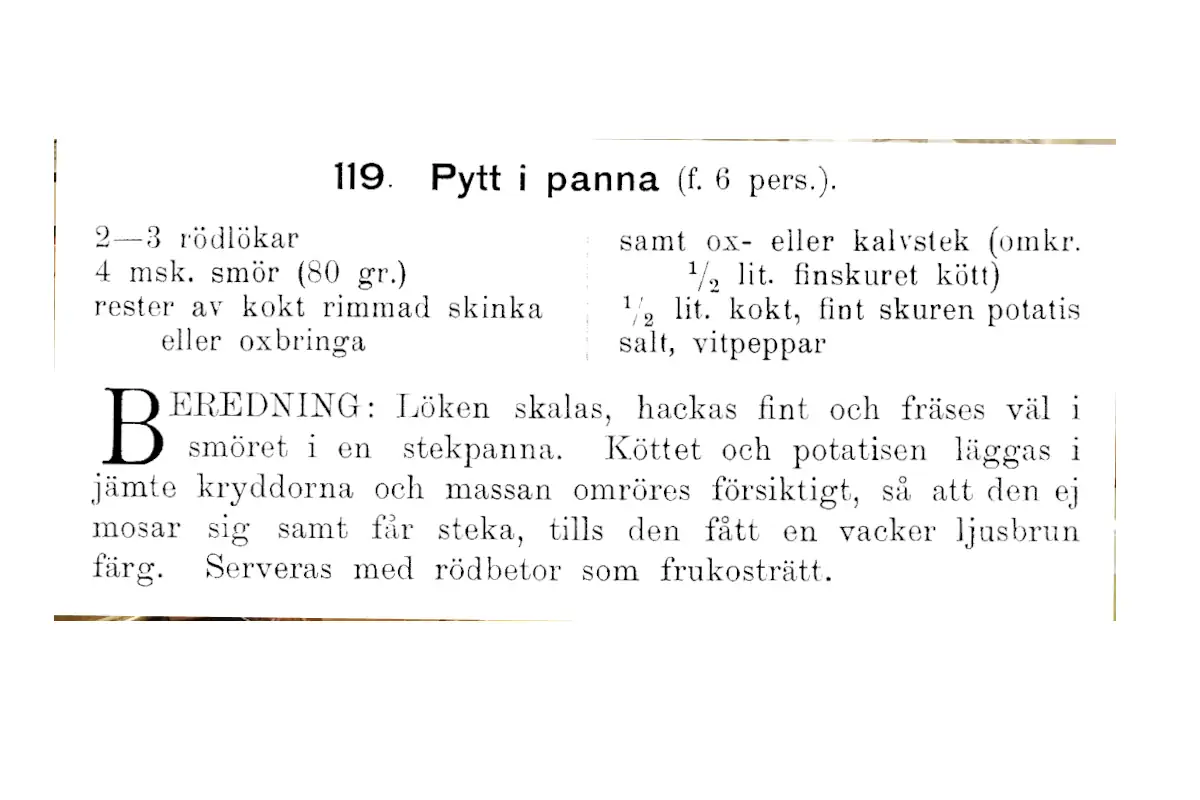
Food & Drink
Swedish Fika: More Than Just a Coffee Break
Discover the heart of Swedish culture with Fika, a cherished tradition that's more than just a coffee break. It's about…

Pyttipanna, or “pytt i panna,” is a beloved Swedish dish that embodies the practicality and resourcefulness of traditional Swedish cuisine. Translating to “small pieces in a pan,” it is a hearty meal made from pan-fried potatoes, onions, and various meats, often served with a fried egg and pickled beets.
This article reviews the history, cultural significance, and preparation of pyttipanna, offering tourists a deeper understanding of this iconic Swedish dish.
Pyttipanna originated as a way to utilize leftovers, reflecting the resourceful nature of Swedish home cooking, known as husmanskost. This tradition was deeply rooted in the country’s agricultural past, where preservation techniques and the reuse of leftovers were essential for survival during long winters. The dish is not only a staple in Sweden but also popular across Scandinavia, with variations in Norway (pyttipanne), Finland (pyttipannu), and Denmark (biksemad).


Preparing pyttipanna is straightforward and flexible, making it a favorite among locals and visitors alike. The basic ingredients include diced potatoes, onions, and chopped meat (such as sausage, ham, or bacon), which are pan-fried together. Traditionally, butter is used for frying, but olive oil is also common. The dish is often served with a fried egg on top and accompanied by pickled beetroot and sometimes pickled gherkins or capers.
While pyttipanna was initially made from leftovers, it is now common to prepare it from fresh ingredients. Variations include adding cream to create a cream-stewed version (gräddstuvad pyttipanna) or using different meats like beef or game. Vegetarian and vegan versions are also popular, allowing everyone to enjoy this versatile dish.
For tourists visiting Sweden, trying pyttipanna offers a glimpse into the country’s culinary culture. It is a dish that reflects the Swedish values of simplicity, practicality, and community. Many Swedish supermarkets sell frozen pyttipanna, making it easy to enjoy at home, but experiencing it at a local café or restaurant provides a more authentic taste of Swedish life.
Pyttipanna is more than just a meal; it is a symbol of Swedish resourcefulness and hospitality. Whether you’re exploring Stockholm’s vibrant streets or enjoying the tranquility of the countryside, this dish is a must-try for anyone interested in immersing themselves in Swedish culture.
 Pyttipanna
Pyttipanna
 Pyttipanna
Pyttipanna